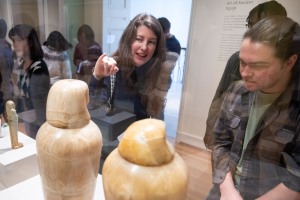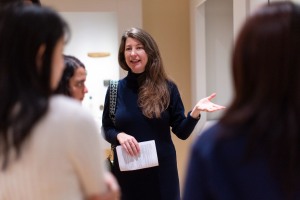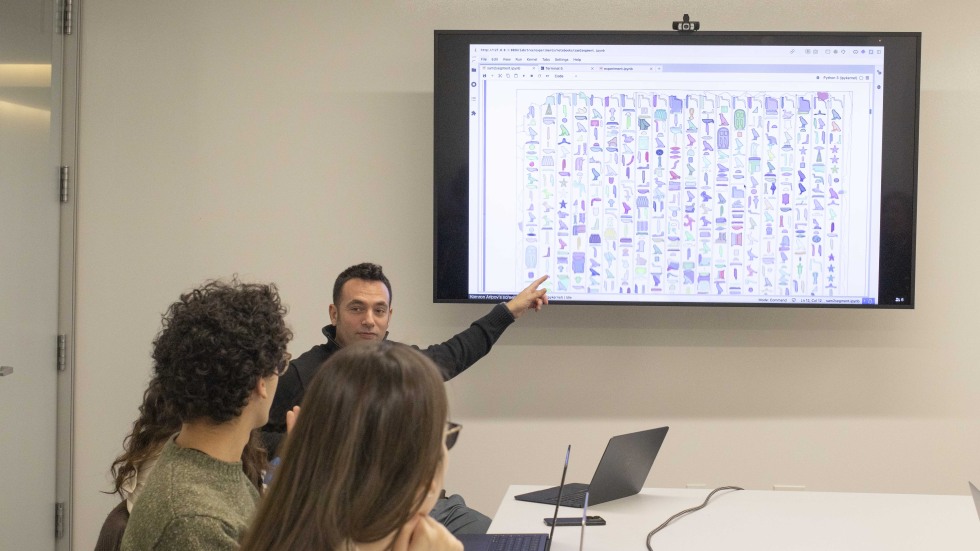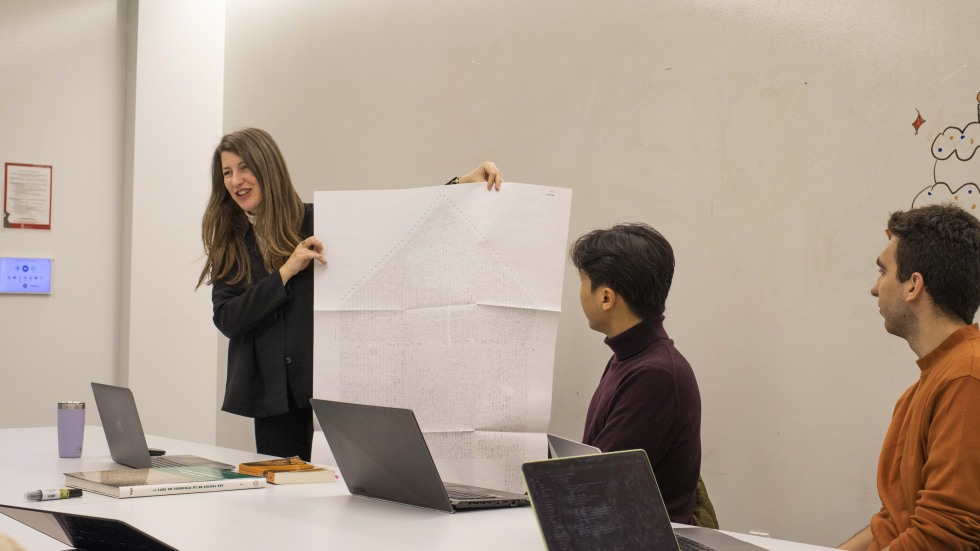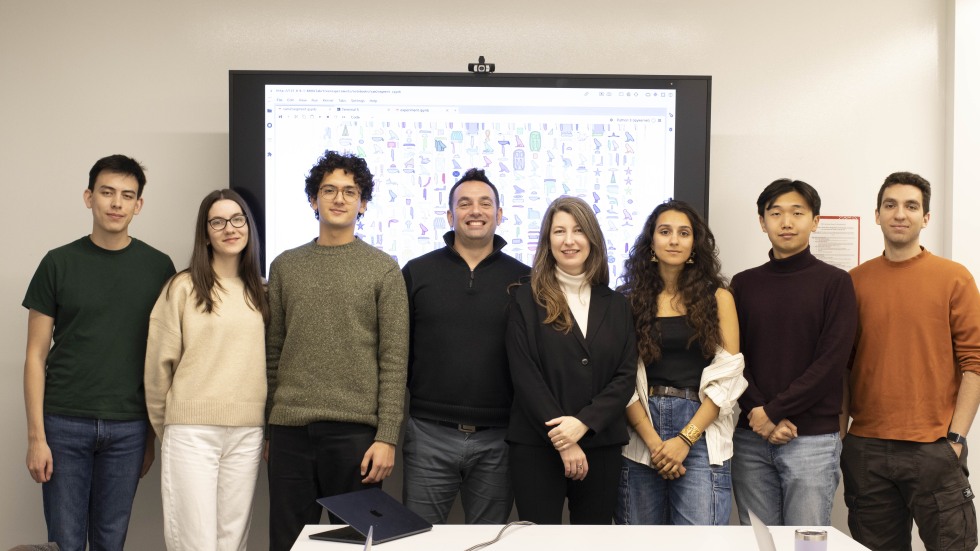PROVIDENCE, R.I. [Brown University] — Christelle Alvarez is piecing together one of the world’s most ancient puzzles, one limestone fragment at a time.
The assistant professor of Egyptology and Assyriology at Brown University is an expert in the Pyramid Texts, the world’s earliest known collection of religious writings. Inscribed and preserved in 4,000-year-old pyramids in Egypt’s necropolis of Saqqara, the mortuary texts consist of more than 600,000 hieroglyphs and form a vast repository of ancient Egyptian language and beliefs that researchers have been working to excavate, reassemble and fully understand for more than a century.
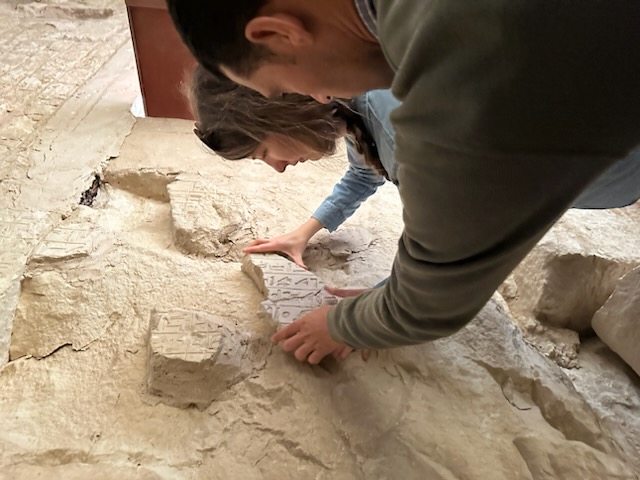
“These texts are the oldest religious corpus of humanity and part of our shared human heritage, and there’s still a lot we don’t know about them,” said Alvarez, who conducts annual field research in Egypt. “My research focuses on understanding this material more, including how it was transferred throughout time and how ancient Egyptians engaged with it.”
Across the globe on Brown’s campus, Alvarez is co-leading the Digital Pyramid Texts Project, a collaboration with Brown Assistant Professor of Computer Science Nikos Vasilakis that is deploying computational and statistical techniques, including machine learning technology, to make the ancient texts more accessible to scholars, students and the public.
Alvarez and Vasilakis are working with a team of undergraduate and graduate students, as well as visiting research fellows, to build an open-source digital platform with an online interface, similar to a search engine that will allow anyone to easily read and query the texts. Currently, access to the texts is limited due to the complexities of hieroglyphic script — which includes variations in the shape of signs from one pyramid to another — as well as restricted physical access to the pyramids, insufficient digitization and publication in unsearchable documents.
“They’re obscure and hard to access and appreciate, especially compared to other religious texts, like the Torah and the Bible,” Alvarez said. “This project is focused on democratizing access to the texts, and aims to facilitate scholarly research while also making them accessible to non-specialists.”
Alvarez and Vasilakis’ collaborative endeavor, which is developing systems for processing, storing and analyzing large-scale data sets derived from the ancient Egyptian inscriptions, is supported by a Brown Data Science Institute seed grant.
“This is an exciting opportunity to apply a computational and data science lens to materials that are typically examined through humanities perspectives,” Vasilakis said. “The infrastructure and interdisciplinary culture of Brown, including the Open Curriculum, has made this research possible.”
Pondering the pyramids
Since 2011, Alvarez has belonged to a group of researchers responsible for examining the ancient Egyptian burial ground of Saqqara, which is about 20 miles south of Cairo. At the end of every year, Alvarez travels there, where she balances wrapping up a semester of teaching Egyptology courses at Brown, remotely, while also directing research at the pyramid of Eighth Dynasty king Qakare Ibi, the last inscribed pyramid built in the Saqqara necropolis.
“Whereas a lot of pyramids are known for their beautiful carving, the style and quality of the carving of this pyramid is not as neat as it appears in others,” Alvarez said. “But because it’s not that polished, it also provides a lot of wonderful evidence of the process and of the way the people working in the pyramid were engaging with the material.”
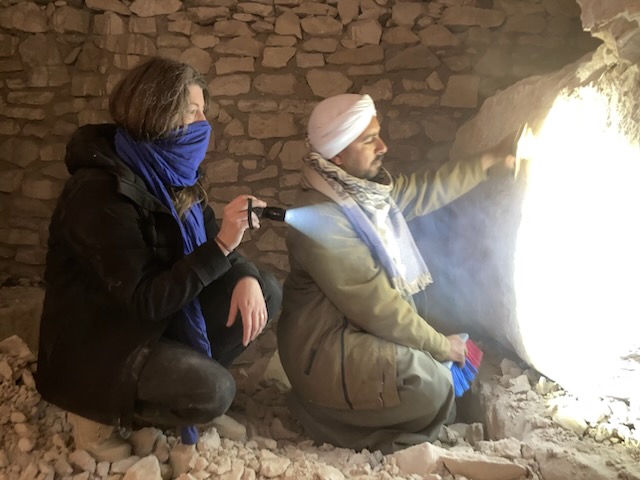
Among her research goals, Alvarez is interrogating a theory tied to the monument that it epitomizes the collapse of the age of the pyramids. She and a team of as many as 40 archeologists, excavators and architects spend long days studying the pyramid, unearthing and piecing together fragments of its hieroglyphic text and working to decipher the messages contained within it. Some of the monument's pieces have long been buried due to natural decay, while other areas were damaged more recently due to looting.
Alvarez first began researching Ibi’s pyramid while in graduate school at the University of Oxford. In 2015, while she was studying for her Ph.D., the director of the archaeological mission invited her to direct fieldwork at the pyramid.
“It was definitely a dream to me — something I had never imagined possible,” Alvarez said. “To be in charge of a project like this has allowed me to deeply reflect on how to better understand this material.”
As another extension of her research, Alvarez is working on a book-length publication exploring the process for how ancient Egyptians might have prepared the Pyramid Texts — likely transcribing funerary and ritual writings, which often reference the afterlife, from papyrus onto limestone — and who may have had access to the texts.
